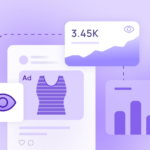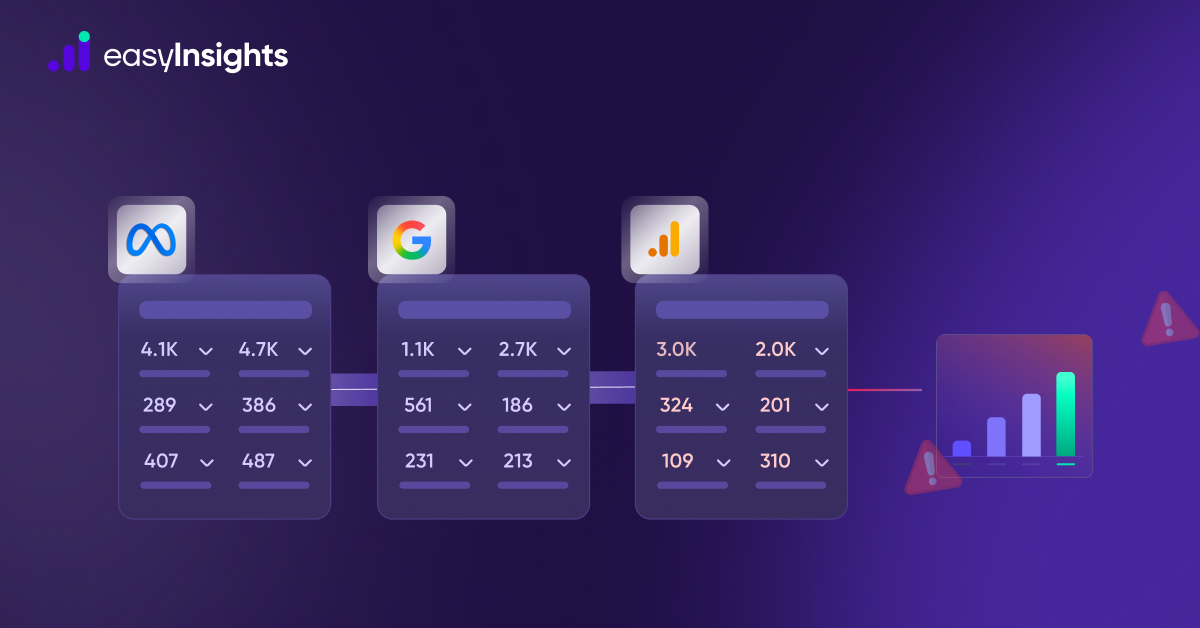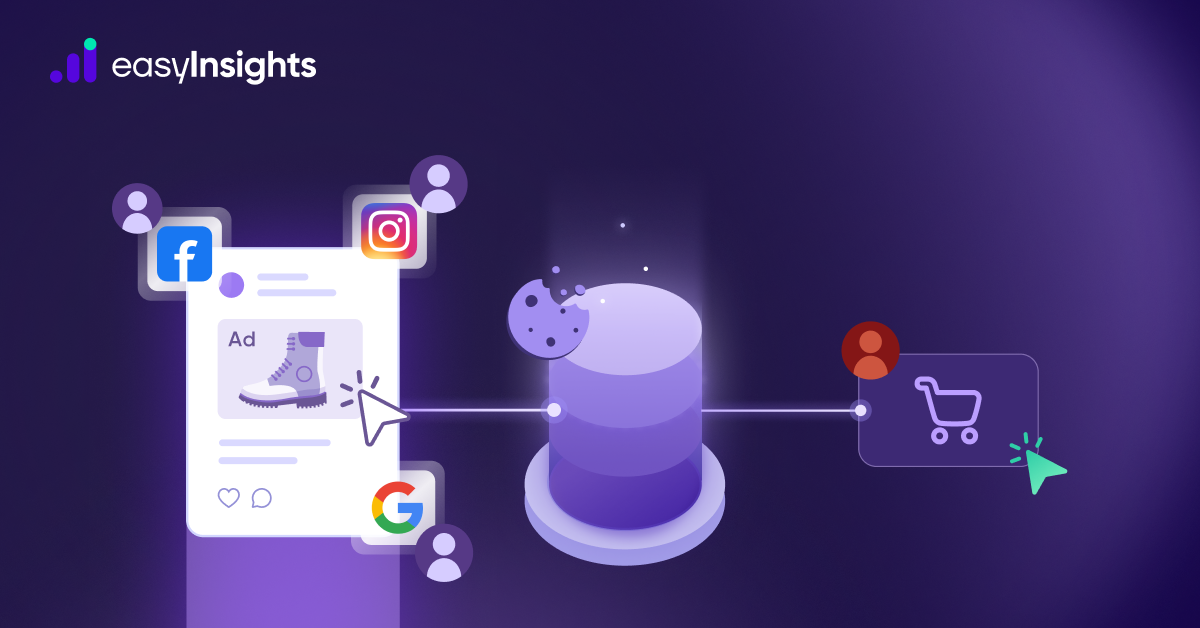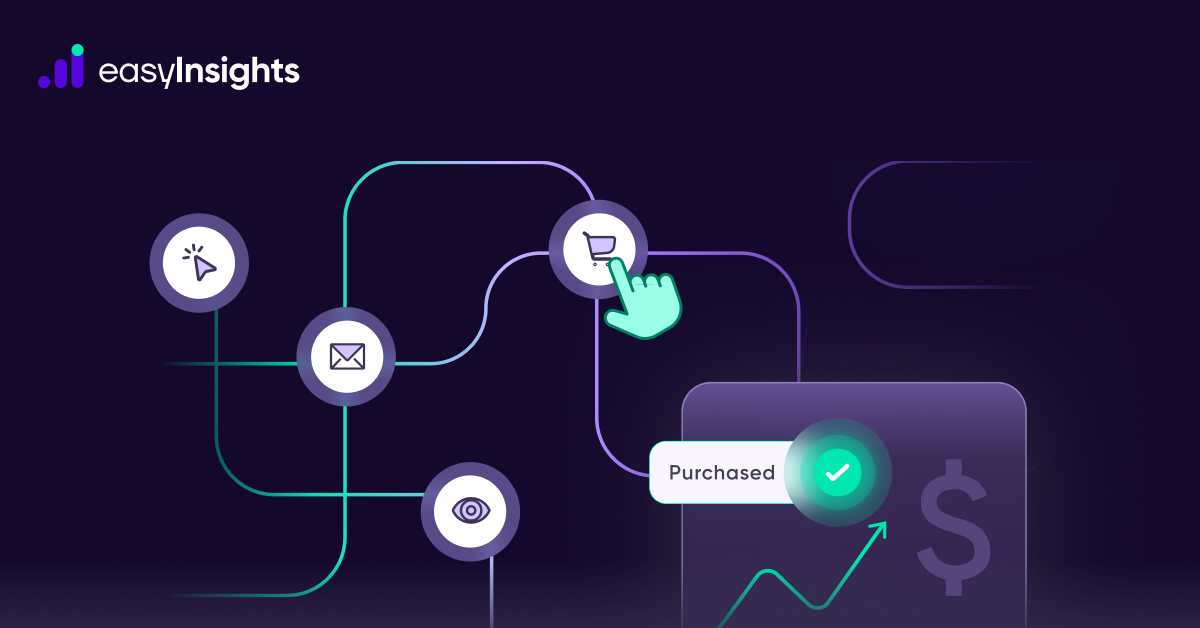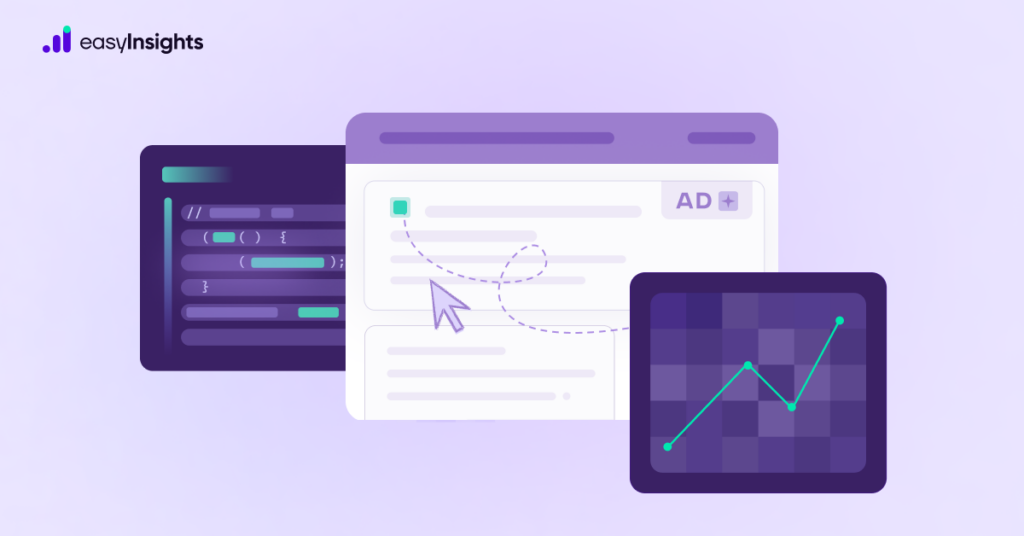
It amazes people how much advertisers seem to know about them. They might show interest in a product or search for it on Google, only to see its ad on subsequent websites and apps they visit. Behind all of this, are tiny tracking pixels.
What may seem like magic to customers is, in fact, a simple but effective tracking tool for advertisers. A tracking pixel offers unparalleled insights into consumer behavior and the effectiveness of online campaigns, allowing you to create more personalized campaigns and serve targeted ads.
With numerous types of data protection laws in the works, tracking pixels are your best bet to track your audiences over the Internet. So, we created this guide to help you understand exactly what tracking pixels are and how they work.
Jump ahead to:
What Are Tracking Pixels?
A tracking pixel, also called marketing pixel, is an invisible 1×1 pixel-size image that marketers embed in web pages, advertisements, and emails. The image is usually hosted on the servers of an advertising platform and collects information about users. When a user visits a website or interacts with an ad or email, the tracking pixel loads and sends data to the pixel’s server. This lets you track website traffic, interactions, user behavior, and conversions.
How Do Tracking Pixels Work?
Let’s understand in detail how tracking pixels work.
1. Tracking Pixel’s Code
To add a tracking pixel, you must embed its code into the web page or an email where you wish to track users. Depending on the platform, this may involve using HTML code or JavaScript.
Here’s an example of an HTML tracking pixel:
<img src=”https://example.com/tracking-pixel.png” alt=”” width=”1″ height=”1″ />
This is what a JavaScript tracking pixel looks like:
<script>
// JavaScript Tracking Pixel Code
(function() {
var pixel = new Image(1, 1);
pixel.src = “https://example.com/tracking-pixel.gif”;
})();
</script>
2. The Pixel Image on the Server
The actual pixel image is hosted on a server, which is typically maintained by an advertising network or an analytics platform. This server acts as a repository for various pixels, and their code serves as a map to locate the exact pixel on the server. When the pixel is loaded, the server receives a request to deliver the tiny image.
3. The Pixel Image on the User’s Browser
When a user visits a webpage, opens an email, or views an ad containing a tracking pixel, their browser requests all assets from the server, including the tracking pixel image. As the browser requests the pixel image, it automatically sends data back to the server. This information includes the user’s IP address, browser type, screen resolution, etc.
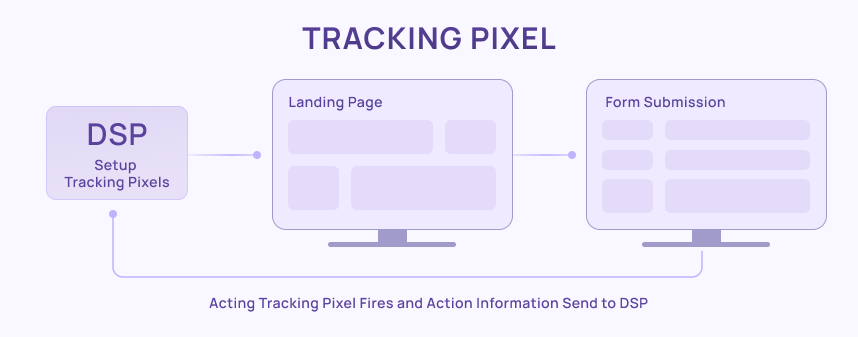
What kinds of Data can Pixels Collect?
The primary function of a tracking pixel image is to track user behavior and interactions, enabling it to collect a wide range of data points. Depending on how you configure a pixel, the collected data may include:
- IP Address
- Date and Time of Visit or Action
- Type of Device and Browser
- Referring URL
- Page Views
- User Engagement
- Cookies
- Screen Resolution
- Conversion Tracking
- Email Interactions (Email opens and URL clicks)
What Are Some Types of Tracking Pixels?
Here are different types of tracking pixels:
1. Conversion Pixels
Conversion pixels track which actions users complete on a website. These actions include usual conversions like filling out a form, signing up for a newsletter, completing a purchase, downloading an eBook, etc. The pixel activates and sends data to the server only when users complete a desired action.
2. Retargeting Pixels
These pixels track user behavior on a website, such as which pages are visited, time spent on a page, scroll depth, and more. Their primary use is to collect data that can be used to define custom audiences for ad campaigns.
3. Analytics Pixels
Analytics pixels are helpful for monitoring website performance as they collect data like page views, session duration, time spent on a page, and users’ demographic details. Website analytics tools like Google Analytics use these pixels to gather data for their reports and dashboards.
4. Social Media Pixels
Similar to web analytics tools, social media platforms like Facebook and Twitter also provide pixels for advertisers using their ad services. These pixels help track users and conversions originating from your social media ads.
5. Email Tracking Pixels
Email tracking pixels are used to track metrics such as email opens, click-through rates (CTRs), and clicks. They help you understand how users interact with your emails and can also assist in optimizing subject lines, content, and CTAs for better results.
Additional Read: Lead Generation with Email Marketing – A Guide for B2B SaaS Companies
How Tracking Pixels Are Different from Cookies?
At first glance, tracking pixels might seem similar to browser cookies, but they differ significantly in how they collect user data.
Cookies are small text files stored on users’ browsers. They primarily track user preferences and session information. This information helps marketers deliver personalized experiences based on a user’s browsing history.
Tracking pixels, on the other hand, are invisible images hosted on a server. They track user interactions like page views, email opens, ad impressions, and conversions. These pixels are crucial in digital marketing for effective campaign tracking and retargeting. You can even request cookie data stored on a browser using a tracking pixel.
Here’s a head to head comparison between cookies and tracking pixels:
| Points of Difference | Pixels | Cookies |
| Data Collection | A pixel collects IP address, browser type, page visit time, and conversions. | A cookie collects data about user’s activity on a specific site, such as preferences and session information. |
| Purpose | Used to track user interactions for marketing and analytics (e.g., ad impressions, email opens). | Used to enhance on-site experience by remembering users’ preferences, login details, etc. |
| Location | Stored on a server | Stored in the user’s browser |
| Visibility | Invisible to users | Users can access cookies’ text files from the browser settings. |
| Scope | Tracks users only on the webpage or ads where it’s added. | Can track users across various webpages. |
| User Control | Users cannot disable or delete pixels unless the website owner allows them to. | Users can disable and delete cookies from the browser settings. |
Additional Read: Farewell to Third-Party Cookies: Refining Retargeting Tactics
Using Tracking Pixels to Power Marketing
Here are some common ways marketers can utilize these invisible pixel-sized images:
1. Web Analytics and Conversions Tracking
By embedding pixels on your website, you can track which pages users visit, the duration of their stay on a web page, and the specific path they take through your site. Moreover, you can monitor which pages and sections of your website are driving conversions, be it sign-ups, downloads, or purchases.
2. Personalization
Tracking pixels provide detailed insights into a customer’s preferences and behaviors. This information enables you to create customized web experiences based on their past interactions. This may include new content, targeted advertisements, sales promotions, and more.
3. Boost Engagement and Click-Through Rates
If your goal is to enhance engagement and click-through rates (CTRs), tracking pixels are invaluable. The data collected can reveal which content, product pages, emails, and calls-to-action (CTAs) are most effective. Armed with this knowledge, you can fine-tune your content strategy to foster greater engagement and clicks.
4. Optimize Ads
Tracking pixels are instrumental in evaluating the performance of your online ads. They provide valuable insights into which ads are more successful in generating impressions, clicks, and conversions. Consequently, you can accurately assess your ads’ return on investment (ROI) and allocate your advertising budget more judiciously.
5. Retargeting
Another significant advantage of tracking pixels for advertisers is their role in retargeting. Pixels can help you identify users who visit your website but leave without making a purchase or engaging in other desired actions.
You can then create campaigns specifically tailored to these users based on their previous browsing behavior, significantly increasing the likelihood of them returning and converting.
Privacy Concerns to Consider When Using Tracking Pixels
A few years ago, experts would’ve recommended jumping on the tracking pixel bandwagon right away. However, the landscape has changed significantly. Today, tracking pixels are often viewed as intrusive and, from a user privacy perspective, potentially unethical. Therefore, there are several important considerations to keep in mind.
The primary concern with tracking pixels is that they collect data without the user’s consent. Pixels are invisible images that users cannot see, making it impossible for them to block them from firing when visiting a site or interacting with an ad. This practice has led to increased user scrutiny over the use of pixels to track their Internet activity.
Moreover, regulators worldwide are implementing stricter norms to limit the use of tracking pixels. Whether it’s the GDPR in Europe or the CPRA in California, marketers are now required to disclose when they collect data and what data they collect. They must also seek the user’s consent before tracking a user’s activity.
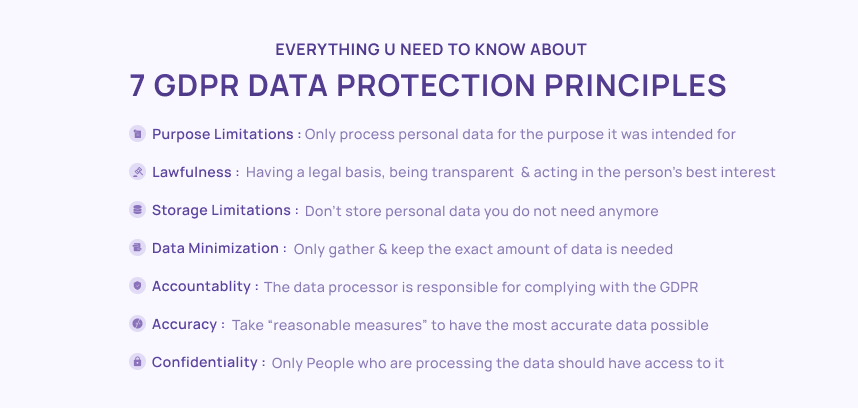
How to Make Pixel Tracking Privacy Compliant?
Controversies and laws haven’t made pixel tracking less effective. As long as you remain compliant with privacy norms, you can still use pixels to track users and deliver them the best experience. Here are some essential steps you must take to make pixel tracking safe for your audience:
1. Consent Management
Laws like GDPR have brought consent management to the forefront. You must display consent banners on your website to disclose that you use pixels to track users. These banners should allow users to accept, decline, or control their level of tracking.
Moreover, privacy regulations require you to use consent management platforms. These platforms help in creating consent notices and collecting and managing the consent preferences of your users.
Additional Read: An Ultimate Guide to Google Consent Mode
2. Data Minimization and Anonymization
Another important practice to incorporate is to minimize data collection, i.e., collect only the data you need for your marketing efforts. And, instead of collecting data as it is, you must anonymize it so it can’t be mapped back to individual users.
3. Opt-Out Option for Users
Even when users consent or opt-in for tracking, it shouldn’t be an irreversible action. Instead, you must implement mechanisms to allow users to revoke or opt out of tracking anytime they want.
4. Data Retention Policy
If you track your users, you must also implement a data retention policy. You must only store user data for a certain period. This is an important consideration from the perspective of privacy compliance under the new norms.
5. Vendor Compliance
If you use analytics tools or advertising networks that offer pixel tracking, you must ensure that they comply with all the privacy norms. They must have well-established processes to safely collect and manage data using pixels.
Supercharge Your Marketing with EasyInsights Tracking Pixels
Tracking pixels should be in your marketing repertoire as they are ideal for delivering personalized experiences, enhancing engagement levels, and driving conversions. However, it’s important to remember that tracking pixels won’t put your advertising on auto-pilot. Regular monitoring is crucial to ensure that all your KPIs and goals are being met.
That’s where EasyInsights comes in.
EasyInsights is a sophisticated marketing automation and analytics platform designed to centralize your multi-channel marketing data in one convenient location. With this tool, you can clean, transform, and seamlessly transfer your data to any BI tool for comprehensive reporting.
Moreover, EasyInsights offers advanced analytics features such as segmentation, omnichannel attribution, and cohort analysis, empowering you to delve deeper into your marketing data and extract valuable insights.


